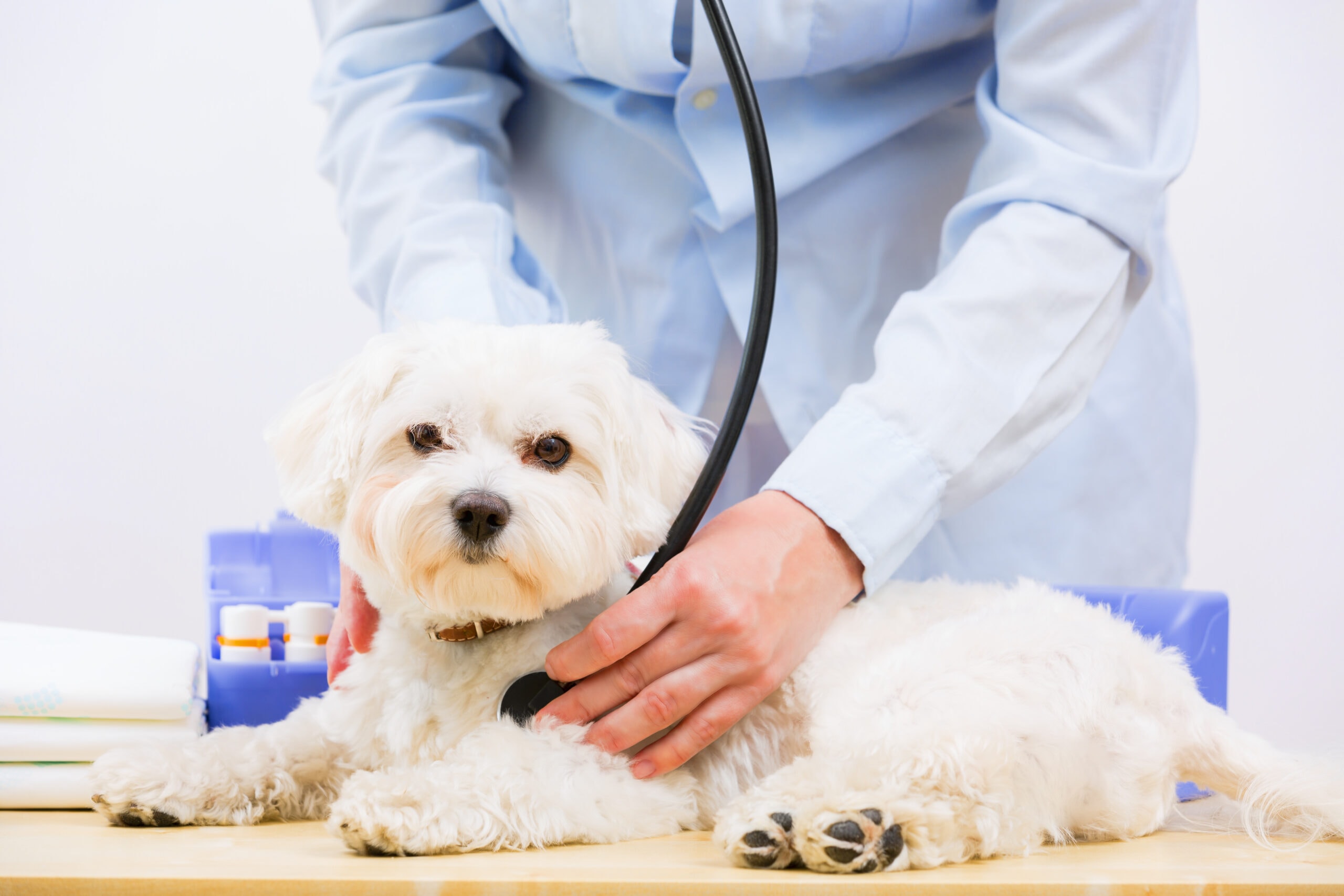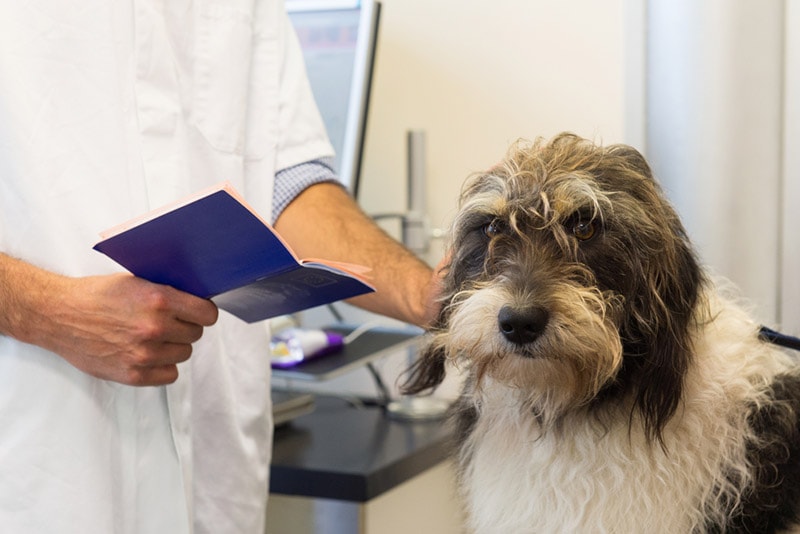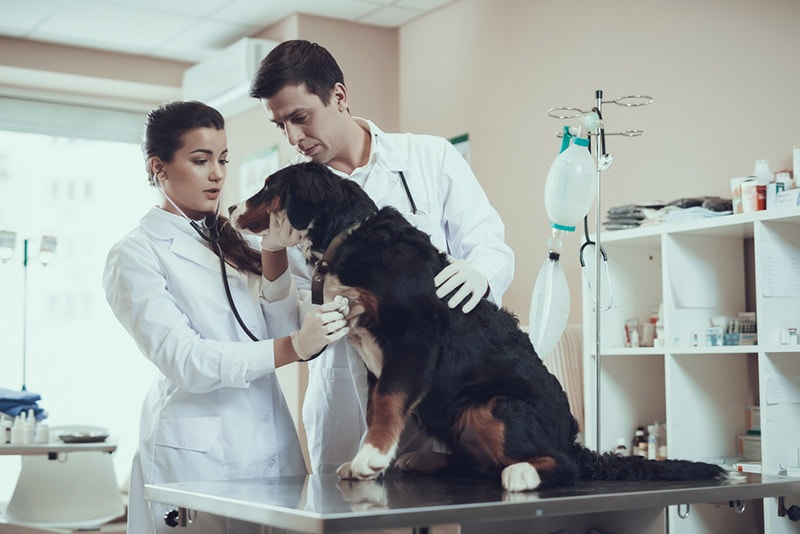How Does a Vet Take a Dog’s Blood Pressure? Vet Approved Step-By-Step Guide
Updated on

Just like us, dogs can suffer from blood pressure issues, more commonly high blood pressure- known as hypertension.
In order to diagnose this, vets will measure a dog’s blood pressure in a very similar way to how doctors measure our blood pressure. The biggest roadblock to taking your dog’s blood pressure is often getting your dog to cooperate!
Preparing to Take a Dog’s Blood Pressure
Your vet will gather the equipment they need. There are 2 main types of blood pressure monitors that a vet may use. A fully automatic monitor or a sphygmomanometer with a doppler and probe. A fully automatic blood pressure monitor is often easier.
The correct sized cuff is also needed. The size will be chosen based on the size of your dog’s limb or tail. A cuff that is too big or small will affect the blood pressure reading. Cuff width needs to be 30-40% of the circumference of the site where it is being applied.

The Step-By-Step Guide on How a Vet Takes a Dog’s Blood Pressure
1. Calming the Dog
It is important that your dog is calm and prepared for the procedure. Anxiety and stress can increase your dog’s blood pressure, giving improper readings.
Vets will try and choose a quiet and calm environment, and spend time petting and reassuring your dog.
2. Correct Positioning
Lying on their side relaxed, is usually the best position to take accurate blood pressure readings but vets will adapt this depending on how comfortable your dog is.
The cuff can be placed on the front of back legs or the tail. For breeds with shorter legs such as the Basset Hound the tail is often a better place. Again the site will be chosen partly depending on what your dog is happiest with.

3. Oscillometric sphygmomanometry blood pressure measurement
The oscillometric technique for measuring blood pressure uses an automatic machine to determine diastolic, systolic and mean arterial pressure along with pulse rate.
The vet will place the cuff in the most appropriate place and then the machine does most of the work taking the readings.
4. Doppler ultrasonic blood pressure measurement
When using a doppler to assess blood pressure, hair may need to be clipped over an artery below the cuff, and special ultrasonic conductance gel is placed. Blood flowing through the artery will produce audible sounds on the Doppler machine. The cuff is then inflated until no sound is audible and then deflated slowly until the sound returns.
With both of these techniques several readings are taken and the average is then calculated for accuracy. Often the first reading is discarded.

5. Blood Pressure Readings
Normal blood pressure ranges for dogs are usually around:
- Systolic pressure: 120 – 160 mmHg
- Diastolic pressure: 60 – 100 mmHg
Of course, there are exceptions to this rule. Sometimes, if the dog is stressed or anxious, a higher blood pressure reading may be considered “normal.” One poor reading doesn’t necessarily mean something is wrong with your dog. In many cases, it may just be that your canine is anxious.
The dog’s age, breed, sex, weight, and overall health can also affect the reading.
Low blood pressure is known as hypotension. Many factors, including dehydration, heart disease, and shock, can cause it. It can also be caused by an injury with significant blood loss. Low blood pressure means that the major organs are not receiving enough oxygen which can lead to serious consequences.
High blood pressure is known as hypertension. High blood pressure is usually secondary to an underlying issue in dogs such as kidney disease, diabetes, and obesity.
Your vet will often need to repeat blood pressure meetings to confirm a diagnosis as one reading that’s out of the normal ranges doesn’t necessarily mean that your dog has something wrong with them. Your vet may also recommend other tests, such as bloodwork or imaging, to determine the underlying cause of the out-of-range blood pressure.
Conclusion
Taking a dog’s blood pressure is the same as taking a human’s. Sometimes a dog is not as cooperative, making the process more challenging! Early detection, investigation and appropriate treatment of blood pressure issues are key to your dog’s overall health.
Featured Image Credit: gorillaimages, Shutterstock













